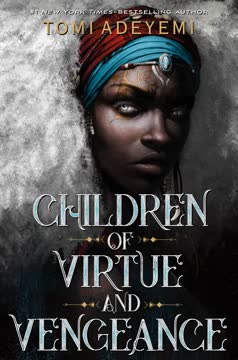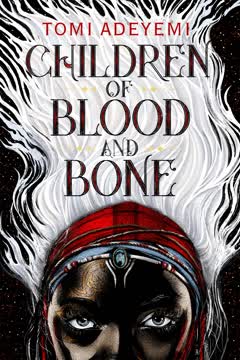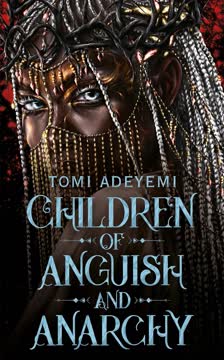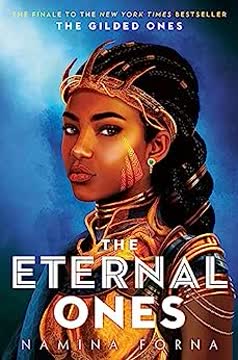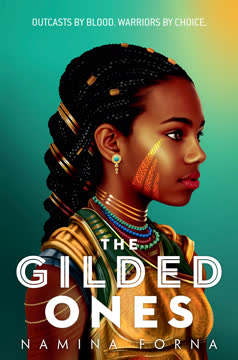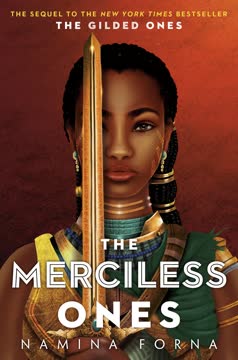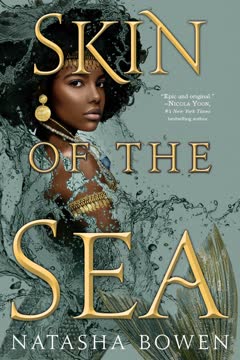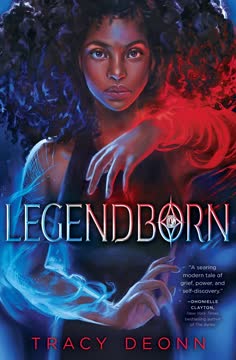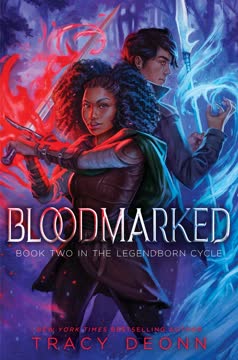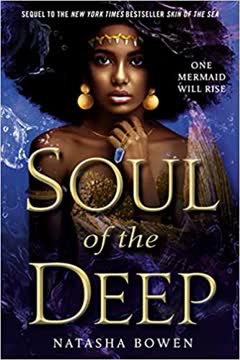Plot Summary
Ashes and Aftermath
The story opens with Zélie and her brother Tzain burying their father, whose death is a direct result of Zélie's quest to restore magic to Orïsha. The world is in chaos: magic has returned, but so has violence, and the monarchy is hunting the newly empowered maji. Zélie is wracked with guilt, feeling that her powers have only brought more suffering. Amari, the former princess, is determined to claim the throne and bring peace, but the kingdom is fractured, and the cost of their actions weighs heavily on all.
Fractured Alliances
As Zélie, Tzain, and Amari seek allies, they are forced to rely on Roën, a mercenary with his own agenda. The return of magic has not united the people; instead, it has created new divisions, especially with the rise of tîtáns—nobles who now wield magic. The group's fragile alliance is tested by mistrust, grief, and the threat of civil war. The Iyika, a rebel maji faction, emerges, targeting the monarchy and deepening the kingdom's instability.
The Queen's Return
Amari's attempt to claim the throne is interrupted by the dramatic return of Queen Nehanda, Amari's mother, who reveals herself as a powerful tîtán. She denounces Amari as a traitor and unleashes a devastating attack on the maji, using majacite gas and her own legion of tîtán soldiers. The maji are slaughtered, and the fragile hope for peace is crushed as Nehanda's forces seize control, forcing Zélie and her allies to flee.
Revolution's First Flames
In the aftermath, Zélie and her companions are taken in by the Iyika, a sanctuary of rebel maji led by Mama Agba. Here, Zélie is named the Soldier of Death and is pressured to lead the maji in open revolt. The sanctuary becomes a beacon of hope, but also a target. The elders debate whether to seek peace or vengeance, and Zélie is torn between her desire for freedom and her responsibility to her people.
The Price of Power
As the maji train and prepare for war, Zélie is forced to accept the mantle of Reaper elder, a role that demands sacrifice and leadership. Amari, desperate to prove herself, challenges for leadership among the Connectors, but her use of tîtán magic nearly kills her rival and alienates her from the maji. The cost of wielding such power becomes clear: it brings pain, division, and the risk of losing oneself.
Blood and Betrayal
Amari's secret attempts to negotiate peace with her brother Inan are discovered, leading to a catastrophic breach of trust. The monarchy anticipates the rebels' moves, and a deadly trap is set. Zélie and her allies are forced into a desperate mission to recover ancient scrolls, but the monarchy's spies and betrayals within their own ranks lead to disaster, and the maji suffer devastating losses.
The Sanctuary's Hope
In the depths of grief, Zélie and the elders discover the power of the moonstone: by binding their lifeforces together, they can amplify their magic to godlike levels. This connection comes at a terrible price—requiring a willing sacrifice. Mama Agba volunteers, giving her life so the maji can unite their power. With this new strength, Zélie rallies the maji for a final assault on the monarchy, determined to end the cycle of oppression.
The Trap is Sprung
As the united maji march on Lagos, the monarchy springs a devastating trap. Amari, desperate for victory, unleashes a deadly gas attack on a village, believing it will end the war. Instead, it is a ruse: the monarchy escapes, and the maji's army is captured. Zélie and her closest allies are left reeling, forced to confront the consequences of their choices and the true cost of war.
The Heart of War
Amidst the chaos, Zélie's relationships are tested to the breaking point. She is forced to choose between vengeance and mercy when confronted with Inan, who offers to dissolve the monarchy. Amari, haunted by her actions, is imprisoned by her own people. The bonds of love, family, and friendship are strained as each character faces the darkness within themselves and the world around them.
Sacrifice and Survival
The maji, empowered by their connection and sacrifice, launch a last, desperate assault on Lagos. Their magic is overwhelming, but the monarchy's cunning and the trauma of endless conflict threaten to undo them. Zélie must decide whether to kill Inan and end the monarchy, or risk trusting in a new future. The battle is fierce, and victory comes at a price none are prepared to pay.
The Monarchy's Endgame
Just as the maji seem poised to win, the monarchy unleashes a final, unexpected weapon: a gas attack that incapacitates Zélie and her allies. The maji are captured, chained, and loaded onto ships. The monarchy's rule is broken, but so is the rebellion. The dream of freedom is deferred, and the survivors are left to face an uncertain fate far from home.
The Cost of Victory
In the aftermath, Zélie awakens in chains, surrounded by her people, as the ships sail away from Orïsha. The maji have lost their homeland, and the monarchy's legacy is one of ruin and displacement. The survivors must reckon with the choices they made, the lives lost, and the hope that somewhere, someday, they will find a new home and a new beginning.
Chains Across the Sea
As the ships carry the maji into exile, Zélie, Amari, and the others are left to contemplate what remains. Their struggle has cost them everything, but the bonds of love, sacrifice, and resistance endure. The story ends not with triumph, but with the promise that even in chains, the spirit of Orïsha and its people cannot be extinguished.
Characters
Zélie Adebola
Zélie is the heart and soul of the maji resistance, a young woman marked by loss, trauma, and the burden of power. Her journey is one of grief and guilt, as she struggles to reconcile her desire for freedom with the cost of leadership. Zélie's relationships—with her brother Tzain, her friend-turned-rival Amari, and her complicated love for Inan—are fraught with pain and longing. She is both a symbol and a victim of Orïsha's cycle of violence, forced to make impossible choices. Her greatest strength is her capacity for love and sacrifice, but it is also her deepest vulnerability. By the end, Zélie is transformed: no longer just a survivor, but a leader willing to pay any price for her people's future.
Amari Olúborí
Amari is the former princess of Orïsha, driven by a fierce desire to atone for her family's sins and create a better world. Her journey is marked by ambition, insecurity, and the corrosive influence of power. Amari's willingness to do whatever it takes leads her to betray friends and make devastating choices, including unleashing deadly magic on innocents. Her relationship with Zélie is a mirror of her internal conflict: love and admiration twisted by rivalry and guilt. Amari's arc is a cautionary tale about the dangers of believing that ends justify means, and the loneliness of leadership. In the end, she is both redeemer and destroyer, forced to confront the true cost of her vision.
Inan Olúborí
Inan is the conflicted king of Orïsha, caught between his love for Zélie, loyalty to his family, and the impossible demands of the throne. He is haunted by his father's legacy and his mother's ruthlessness, and his attempts at peace are constantly undermined by betrayal and violence. Inan's relationship with Zélie is the emotional core of his character: a love that is both redemptive and destructive. His inability to choose between heart and duty leads to tragedy, and his final acts are those of a man seeking atonement, even at the cost of his own life. Inan embodies the tragedy of a good man destroyed by a broken system.
Tzain Adebola
Tzain is Zélie's older brother, a source of strength, loyalty, and compassion. He is the grounding force in Zélie's life, often serving as her conscience and protector. Tzain's own journey is one of loss and resilience, as he navigates the shifting allegiances and betrayals of war. His love for Amari is tested by her actions, and his devotion to Zélie is unwavering, even as she is consumed by grief and rage. Tzain represents the hope for healing and reconciliation, but he is not immune to the scars of conflict.
Queen Nehanda
Nehanda is the formidable queen of Orïsha, a tîtán whose power and cruelty are matched only by her cunning. She is the architect of much of the kingdom's suffering, wielding magic and majacite with lethal precision. Nehanda's relationship with her children is defined by manipulation and betrayal, and her vision for Orïsha is one of absolute control. She is both a symbol of the old order and a warning of what unchecked power can become. Her downfall is as much a result of her own hubris as the rebellion she inspires.
Mama Agba
Mama Agba is the spiritual leader of the maji, a Seer whose wisdom and compassion guide Zélie and the Iyika. She is a survivor of countless tragedies, and her sanctuary becomes the heart of the rebellion. Mama Agba's greatest gift is her ability to see the potential in others, and her willingness to sacrifice herself for the greater good. Her death is the catalyst for the maji's final transformation, and her legacy endures in the hearts of those she saved.
Roën
Roën is a mercenary with a haunted past, drawn into the rebellion by his connection to Zélie. He is both protector and provocateur, challenging Zélie to confront her fears and desires. Roën's own scars—physical and emotional—mirror those of the maji, and his journey is one of redemption through love and sacrifice. His relationship with Zélie is a rare source of tenderness in a brutal world, and his willingness to risk everything for her is both his salvation and his undoing.
Mâzeli
Mâzeli is a young Reaper and Zélie's Second, embodying the hope and promise of the next generation. His enthusiasm and loyalty are a balm to Zélie's wounds, and his death is a devastating blow to the entire sanctuary. Mâzeli's sacrifice is a stark reminder of the cost of war, and his memory becomes a rallying cry for the maji's final stand.
Kenyon
Kenyon is the elder of the Burner clan, driven by rage and a thirst for justice. He is a powerful fighter and a passionate advocate for the maji, but his single-minded pursuit of vengeance often puts him at odds with Zélie and the other elders. Kenyon's arc is a study in the dangers of letting pain become purpose, and his willingness to fight to the end is both his strength and his flaw.
Nâo
Nâo is the elder of the Tider clan, a skilled water maji whose courage and ingenuity are vital to the rebellion. She is a steadfast ally to Zélie and the other elders, and her relationship with Khani, the Healer, adds depth and warmth to the story. Nâo's resilience and adaptability make her a key player in the final battle, and her losses are felt keenly by all.
Plot Devices
Dual Narratives and Rotating POVs
The novel alternates between the viewpoints of Zélie, Amari, and Inan, allowing readers to experience the conflict from all sides. This structure creates empathy for each character's struggles and highlights the complexity of war, where every choice has unintended consequences. The shifting perspectives also build suspense, as secrets and betrayals are revealed to the reader before the characters themselves understand them.
Magic as Metaphor for Power and Trauma
The restoration of magic is both a blessing and a curse, symbolizing the hope for liberation and the danger of unchecked power. The rise of tîtáns—nobles who gain magic—complicates the struggle, blurring the lines between oppressor and oppressed. The moonstone's ability to bind lifeforces is a powerful metaphor for unity and sacrifice, but it also exacts a terrible price, forcing characters to confront what they are willing to lose for freedom.
Betrayal, Sacrifice, and Cycles of Violence
The story is driven by betrayals—personal, political, and spiritual. Characters are forced to choose between love and duty, vengeance and mercy. The cycle of violence is perpetuated by the belief that only total victory can bring peace, leading to ever-greater sacrifices. The ultimate betrayal comes not from enemies, but from those closest to the heart, and the final exile of the maji is a testament to the enduring cost of unresolved trauma.
Foreshadowing and Symbolism
Prophetic dreams, visions, and the wisdom of elders like Mama Agba foreshadow the choices and sacrifices to come. The recurring motif of chains—literal and metaphorical—underscores the struggle for freedom. The restoration and destruction of homes, from Ilorin to the sanctuary, symbolize the fragile nature of hope and the resilience required to rebuild.
Analysis
Children of Virtue and Vengeance is a sweeping, emotionally charged epic that explores the aftermath of revolution and the true cost of freedom. Adeyemi's narrative is a meditation on power—who wields it, who suffers under it, and what it takes to break its cycle. The novel refuses easy answers: every victory is tainted by loss, every act of heroism shadowed by betrayal. Through the intertwined journeys of Zélie, Amari, and Inan, the story interrogates the nature of leadership, the dangers of vengeance, and the possibility of redemption. The use of magic as both a weapon and a burden reflects the complexities of social change, where the oppressed can become oppressors, and the line between justice and revenge is perilously thin. The novel's conclusion—exile, not triumph—forces readers to confront the reality that true liberation is a process, not a moment, and that healing requires more than the defeat of an enemy. It demands the courage to break the chains within as well as without. In a world where cycles of violence and trauma persist, Children of Virtue and Vengeance is a powerful call to imagine new ways of being, loving, and leading.
Last updated:
Review Summary
Children of Virtue and Vengeance received mixed reviews, with many readers disappointed compared to the first book. Critics felt the characters regressed, relationships deteriorated, and the plot lacked direction. Some praised the magic system and world-building but found the pacing slow and repetitive. Many were frustrated by inconsistent character decisions and excessive arguing. The ending left readers unsatisfied and questioning the series' direction. Despite these criticisms, some still enjoyed the action and themes, though most agreed it didn't live up to its predecessor.
